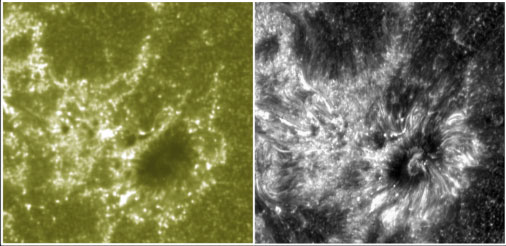 NASA's Interface Region Imaging Spectrograph (IRIS) spacecraft has captured its first observations of a region of the sun that is now possible to observe in detail: the lowest layers of the sun's atmosphere.
NASA's Interface Region Imaging Spectrograph (IRIS) spacecraft has captured its first observations of a region of the sun that is now possible to observe in detail: the lowest layers of the sun's atmosphere.
Jul 25th, 2013
Read more
By directing energy beams at tiny crystals found in a Martian meteorite, a Western University-led team of geologists has proved that the most common group of meteorites from Mars is almost four billion years younger than many scientists had believed - resolving a long-standing puzzle in Martian science and painting a much clearer picture of the Red Planet's evolution that can now be compared to that of habitable Earth.
Jul 24th, 2013
Read more
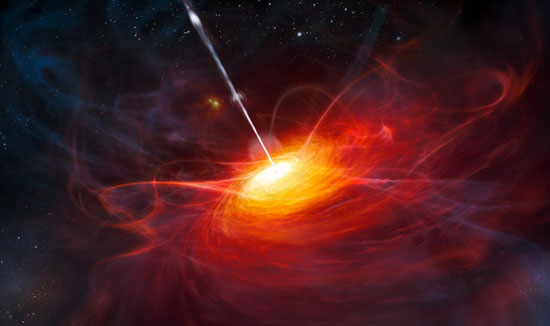 Astrophysicists have documented the immense power of quasar radiation, reaching out for many thousands of light years to the limits of the quasar's galaxy.
Astrophysicists have documented the immense power of quasar radiation, reaching out for many thousands of light years to the limits of the quasar's galaxy.
Jul 24th, 2013
Read more
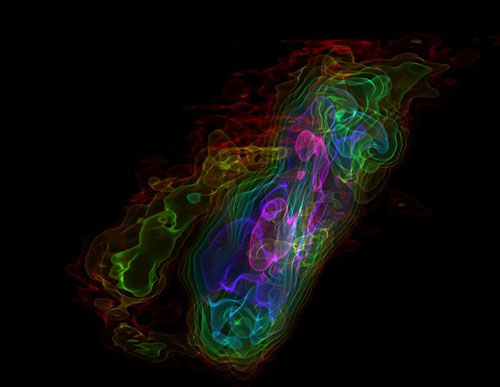 In the system NGC 253, astronomers observe outflows of matter curtailing the birth of stars.
In the system NGC 253, astronomers observe outflows of matter curtailing the birth of stars.
Jul 24th, 2013
Read more
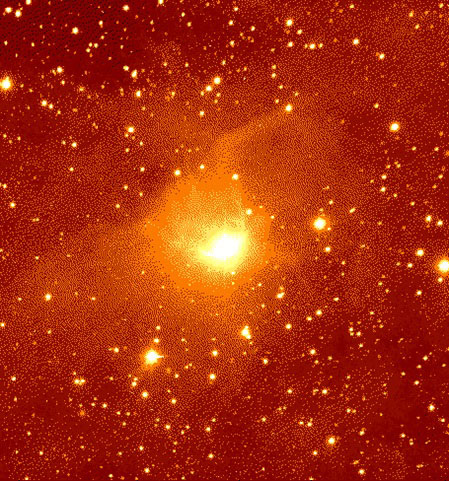 Comets and meteorites contain clues to our solar system's earliest days. But some of the findings are puzzle pieces that don't seem to fit well together. A new set of theoretical models from Carnegie's Alan Boss shows how an outburst event in the Sun's formative years could explain some of this disparate evidence. His work could have implications for the hunt for habitable planets outside of our solar system.
Comets and meteorites contain clues to our solar system's earliest days. But some of the findings are puzzle pieces that don't seem to fit well together. A new set of theoretical models from Carnegie's Alan Boss shows how an outburst event in the Sun's formative years could explain some of this disparate evidence. His work could have implications for the hunt for habitable planets outside of our solar system.
Jul 24th, 2013
Read more
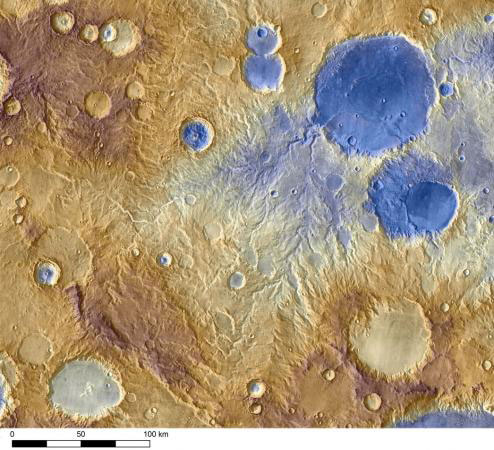 Researchers at Brown University have shown that some Martian valleys appear to have been caused by runoff from orographic precipitation - moisture carried part of the way up a mountain and deposited on the slopes. The findings help to answer the question of whether water flowing on ancient Mars bubbled up from the ground or fell down from the atmosphere.
Researchers at Brown University have shown that some Martian valleys appear to have been caused by runoff from orographic precipitation - moisture carried part of the way up a mountain and deposited on the slopes. The findings help to answer the question of whether water flowing on ancient Mars bubbled up from the ground or fell down from the atmosphere.
Jul 24th, 2013
Read more
Astronomers using NASA's Spitzer Space Telescope have observed what most likely are strong carbon dioxide emissions from Comet ISON ahead of its anticipated pass through the inner solar system later this year.
Jul 23rd, 2013
Read more
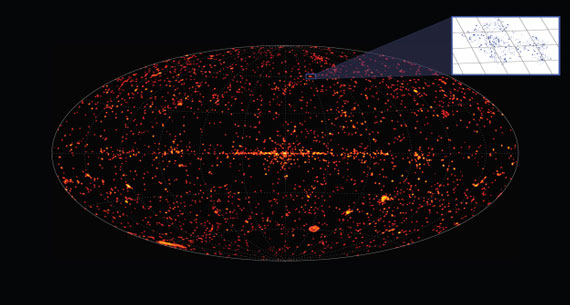 Scientists led by the University of Leicester have set a new record for cosmic X-ray sources ever sighted - creating an unprecedented cosmic X-ray catalogue that will provide a valuable resource allowing astronomers to explore the extreme Universe.
Scientists led by the University of Leicester have set a new record for cosmic X-ray sources ever sighted - creating an unprecedented cosmic X-ray catalogue that will provide a valuable resource allowing astronomers to explore the extreme Universe.
Jul 23rd, 2013
Read more
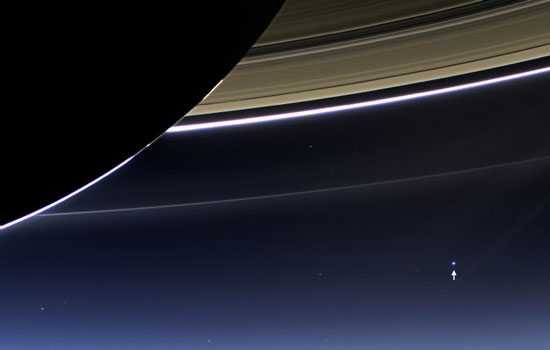 Color and black-and-white images of Earth taken by two NASA interplanetary spacecraft on July 19 show our planet and its moon as bright beacons from millions of miles away in space.
Color and black-and-white images of Earth taken by two NASA interplanetary spacecraft on July 19 show our planet and its moon as bright beacons from millions of miles away in space.
Jul 23rd, 2013
Read more
In a bit of cosmic irony, planets orbiting cooler stars may be more likely to remain ice-free than planets around hotter stars. This is due to the interaction of a star's light with ice and snow on the planet's surface.
Jul 19th, 2013
Read more
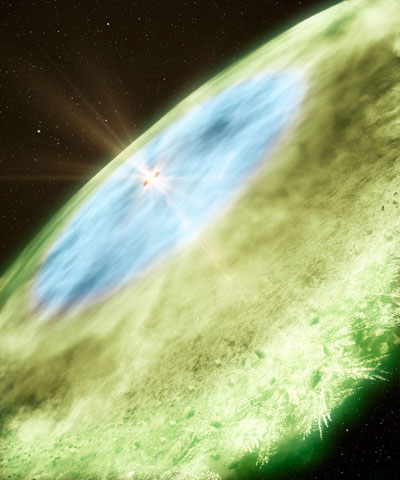 A snow line has been imaged in a far-off infant solar system for the very first time. The snow line, located in the disc around the Sun-like star TW Hydrae, promises to tell us more about the formation of planets and comets, the factors that decide their composition, and the history of the Solar System.
A snow line has been imaged in a far-off infant solar system for the very first time. The snow line, located in the disc around the Sun-like star TW Hydrae, promises to tell us more about the formation of planets and comets, the factors that decide their composition, and the history of the Solar System.
Jul 18th, 2013
Read more
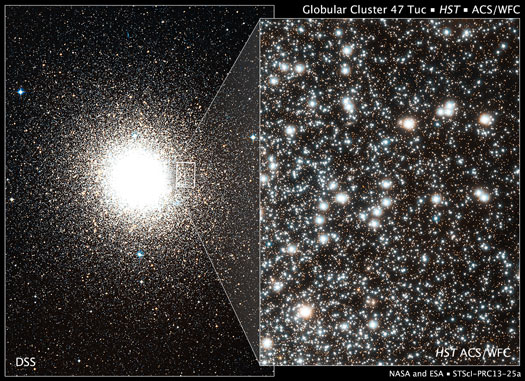 Astronomers using NASA's Hubble Space Telescope have determined the orbital motion of two distinct populations of stars in an ancient globular star cluster, offering proof they formed at different times and providing a rare look back into the Milky Way galaxy's early days.
Astronomers using NASA's Hubble Space Telescope have determined the orbital motion of two distinct populations of stars in an ancient globular star cluster, offering proof they formed at different times and providing a rare look back into the Milky Way galaxy's early days.
Jul 18th, 2013
Read more
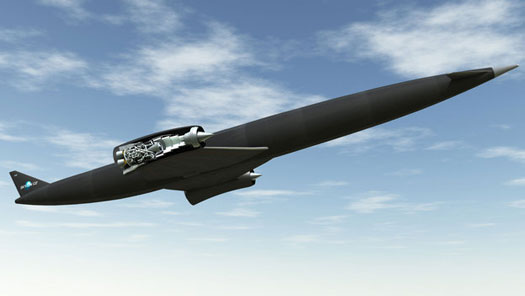 The UK government has announced plans to invest in the development of an air-breathing rocket engine - intended for a single-stage-to-orbit spaceplane - following the ESA-managed feasibility testing of essential technology.
The UK government has announced plans to invest in the development of an air-breathing rocket engine - intended for a single-stage-to-orbit spaceplane - following the ESA-managed feasibility testing of essential technology.
Jul 18th, 2013
Read more
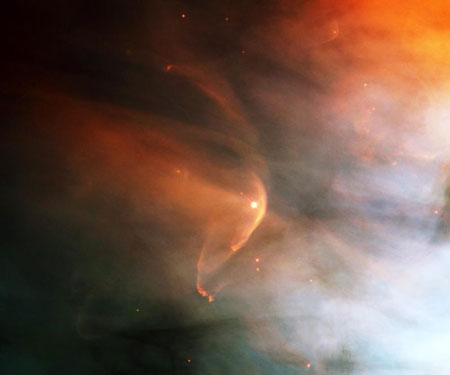 A new study indicates that a bow shock (a dynamic boundary between sun's heliosphere and the interstellar medium) is highly likely. These findings challenge recent predictions that no such bow shock would be encountered.
A new study indicates that a bow shock (a dynamic boundary between sun's heliosphere and the interstellar medium) is highly likely. These findings challenge recent predictions that no such bow shock would be encountered.
Jul 18th, 2013
Read more
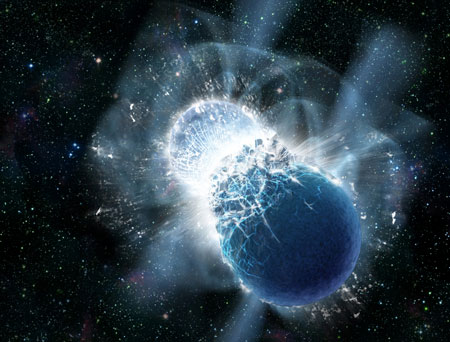 Gold is rare on Earth in part because it's also rare in the universe. Unlike elements like carbon or iron, it cannot be created within a star. Instead, it must be born in a more cataclysmic event.
Gold is rare on Earth in part because it's also rare in the universe. Unlike elements like carbon or iron, it cannot be created within a star. Instead, it must be born in a more cataclysmic event.
Jul 17th, 2013
Read more
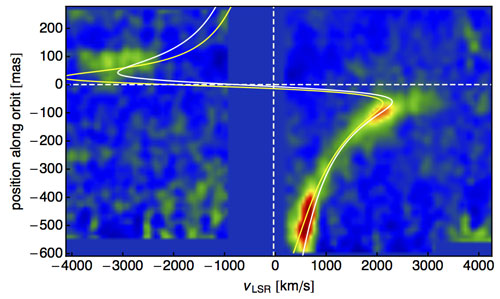 Gas cloud swings around gravity monster at the heart of the Milky Way.
Gas cloud swings around gravity monster at the heart of the Milky Way.
Jul 17th, 2013
Read more
New areas of extragalactic study may emerge from research by astrophysicists using data from the Chandra Space Telescope to conclude that baryons making up all visible matter - once thought to be missing from clusters - are present in the expected ratios in large, luminous clusters.
Jul 16th, 2013
Read more
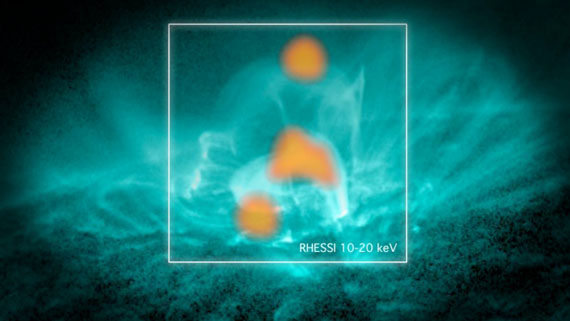 Two NASA spacecraft have provided the most comprehensive movie ever of a mysterious process at the heart of all explosions on the sun: magnetic reconnection. Magnetic reconnection happens when magnetic field lines come together, break apart and then exchange partners, snapping into new positions and releasing a jolt of magnetic energy. This process lies at the heart of giant explosions on the sun, such as solar flares and coronal mass ejections, which can fling radiation and particles across the solar system.
Two NASA spacecraft have provided the most comprehensive movie ever of a mysterious process at the heart of all explosions on the sun: magnetic reconnection. Magnetic reconnection happens when magnetic field lines come together, break apart and then exchange partners, snapping into new positions and releasing a jolt of magnetic energy. This process lies at the heart of giant explosions on the sun, such as solar flares and coronal mass ejections, which can fling radiation and particles across the solar system.
Jul 15th, 2013
Read more
 NASA's Interface Region Imaging Spectrograph (IRIS) spacecraft has captured its first observations of a region of the sun that is now possible to observe in detail: the lowest layers of the sun's atmosphere.
NASA's Interface Region Imaging Spectrograph (IRIS) spacecraft has captured its first observations of a region of the sun that is now possible to observe in detail: the lowest layers of the sun's atmosphere.
 Subscribe to our Space Exploration News feed
Subscribe to our Space Exploration News feed











